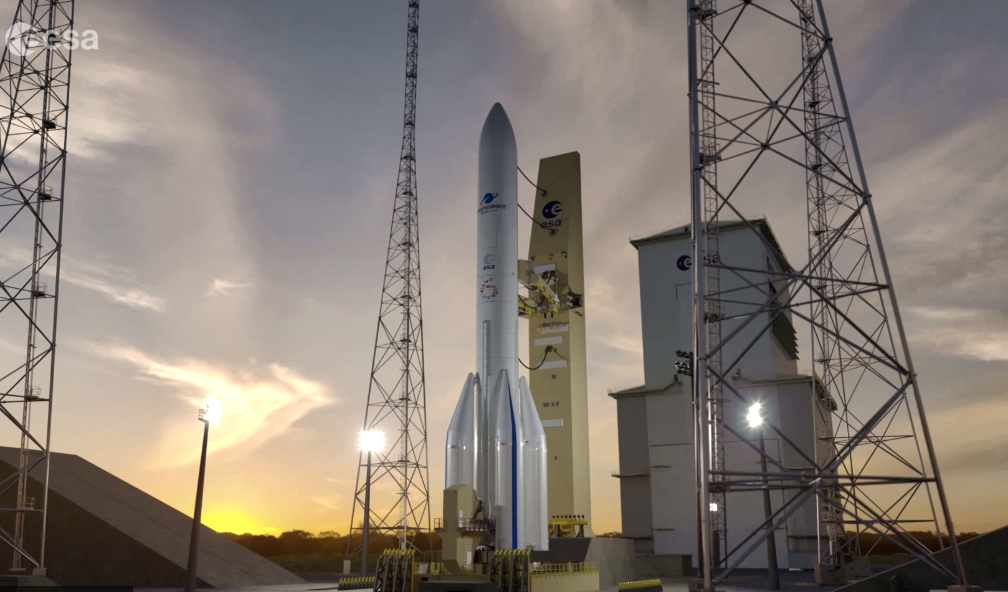
The new launch complex built for Europe’s upcoming Ariane 6 rocket has now been inaugurated at Europe’s Spaceport in French Guiana.
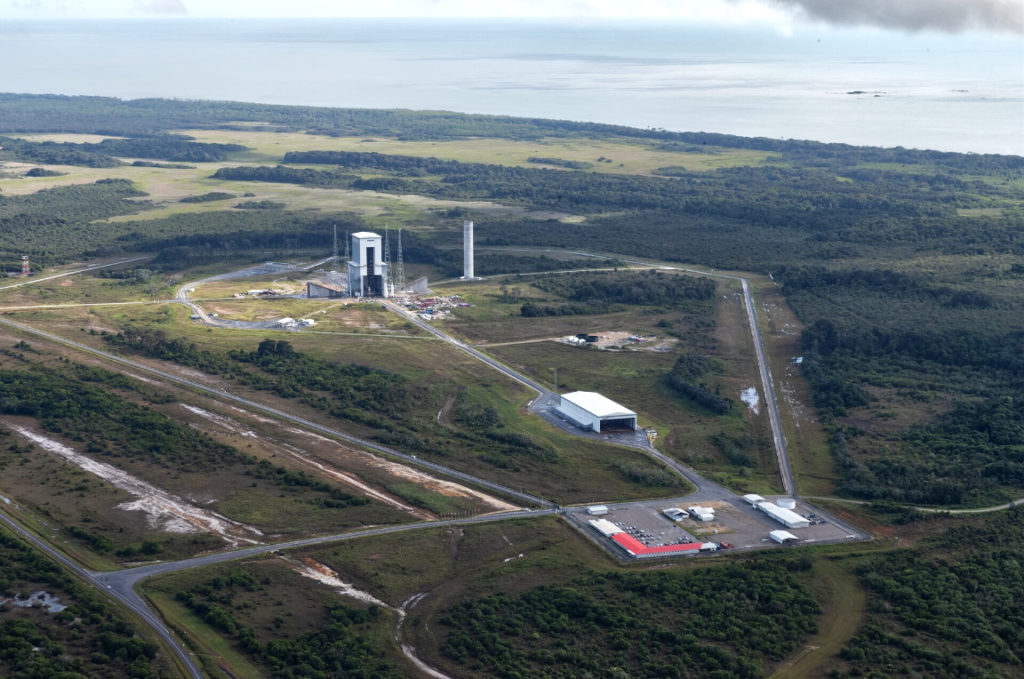
With this event, ESA celebrates another important milestone in the Ariane 6 roadmap as the organization forges ahead with combined tests between launch vehicle and launch base and preparations towards the first launch campaign.

Clearly visible from space, the facilities feature remarkable complex structures above and below ground specially designed to support Ariane 6 launches into the next decade. This is the proud achievement of the French space agency, CNES – prime contractor to ESA for the development of the launch base and its European industry partners. Ariane 6 with four boosters Ariane 6 with four booster.
The Ariane 6 program is funded and developed by ESA. This new launch vehicle will replace Europe’s heavy-lift Ariane 5. Available in two versions, with either two or four boosters, Ariane 6 will offer more performance and flexibility than its predecessor. This opens new opportunities and guarantees continued access to space for ESA Member States.
The main elements include the launch pad with two exhaust ducts, the mobile gantry and the launch vehicle assembly building. Ariane 6 launch complex Ariane 6 launch complex. The launch pad is 28.5 meters deep and 200 meters wide. The basic structure was poured in concrete with the volume of 67 Olympic-sized swimming pools. At its center is the launch table that weighs 700 tons and is 4 meters high, 20 meters long, and 18 meters wide. This structure was built in Europe by MT Aerospace in Germany and shipped to Kourou for integration on the launch pad. Below ground it protects a host of support systems and will bear the weight of Ariane 6.
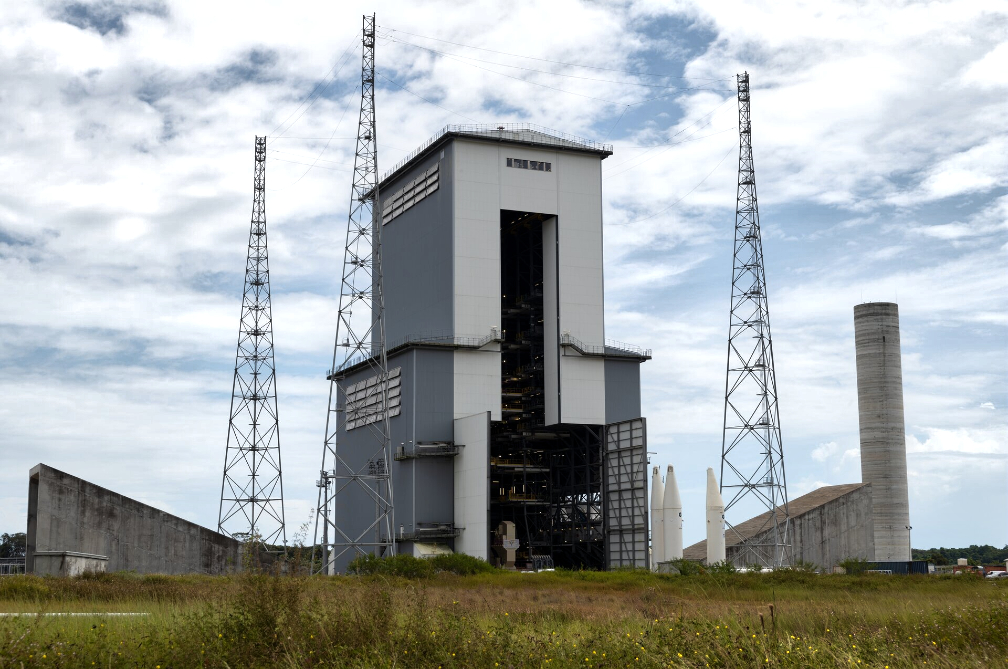
Ariane 6’s final integration will occur inside a mobile gantry, just like Soyuz and Vega. The mobile gantry was manufactured in Europe by Eiffage Metal in Germany and was assembled at the spaceport. The gantry will protect Ariane 6 on the launch table during each launch campaign. Mobile gantry Mobile gantry
This 90 m-high by 50 m-wide gantry weighs 8,200 tons – more than a thousand tons heavier than France’s Eiffel Tower. Work platforms will enable engineers to access the vehicle levels to vertically position Ariane 6’s central core directly on the launch table, add two or four boosters depending on the launch configuration, and integrate the fairing that houses the payload. The gantry retracts 140 meters on rails before launch. If the launch is delayed, the gantry can be rolled back in place to allow access to Ariane 6 before its next launch attempt.
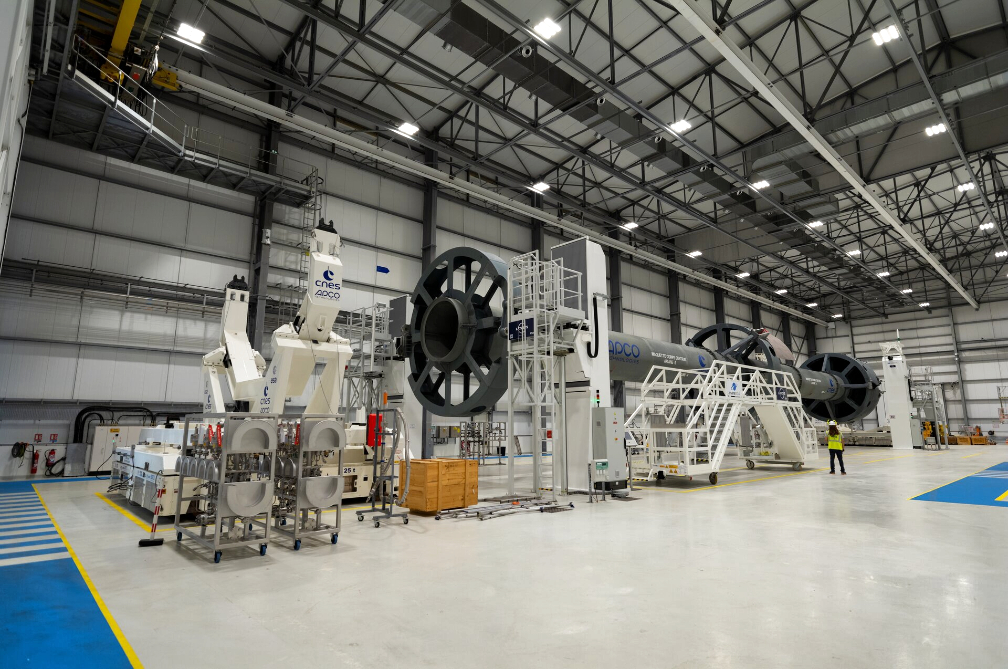
The Ariane 6 core and upper stages will be integrated horizontally inside the launch vehicle assembly building and prepared for rollout to the launch zone. The building is 20 meters tall, 112 meters long and 41 meters wide, some 1 km from the launch zone. Horizontal integration lowers the cost of facilities and launcher integration while offering a higher level of flexibility and growth potential and allowing easier access to the whole rocket. Overall, the improved Ariane 6 approach to integration and operations will reduce the duration of a launch campaign from months to weeks.
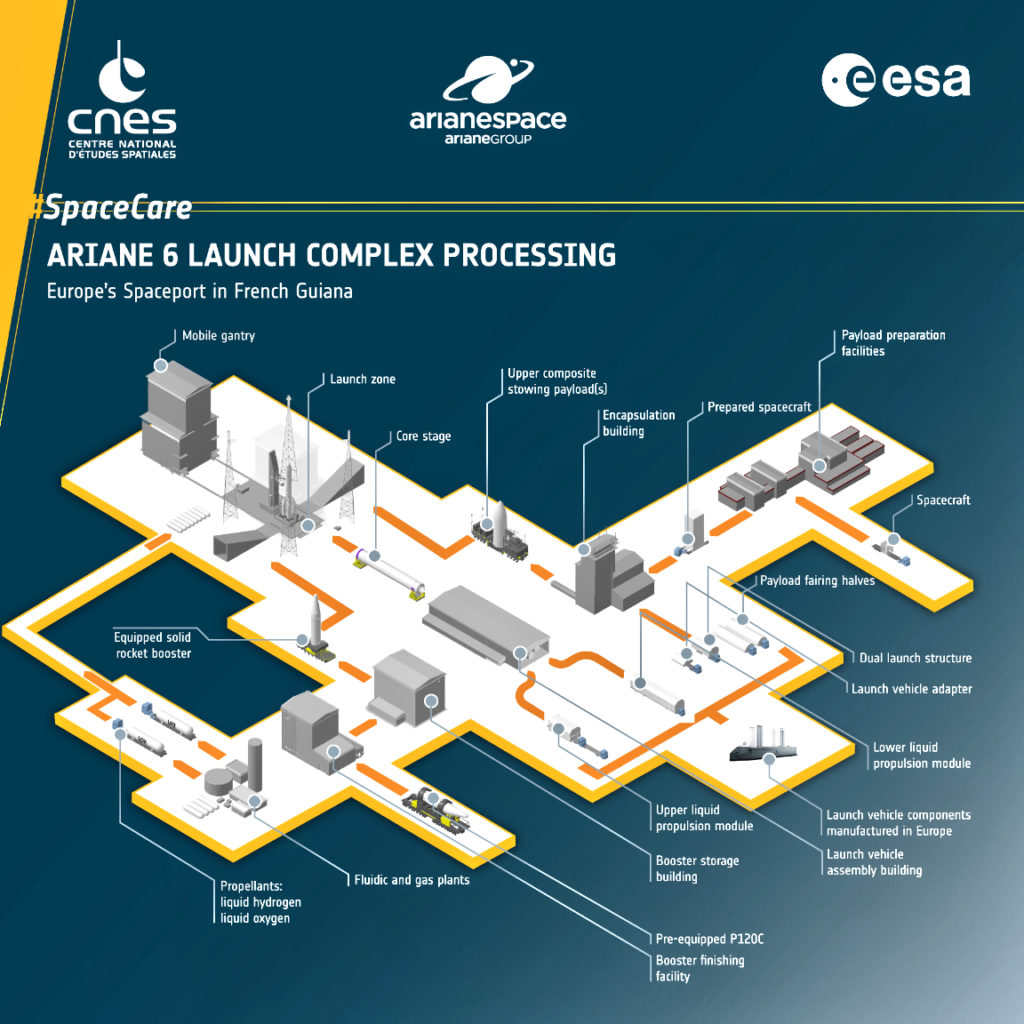
ESA’s contract with CNES for the launch base development worth 600 million euros was signed in 2015. CNES allocated a third of this funding to infrastructure with notable involvement of local industry for construction, materials and equipment, and the remainder to contracts in mainland Europe.
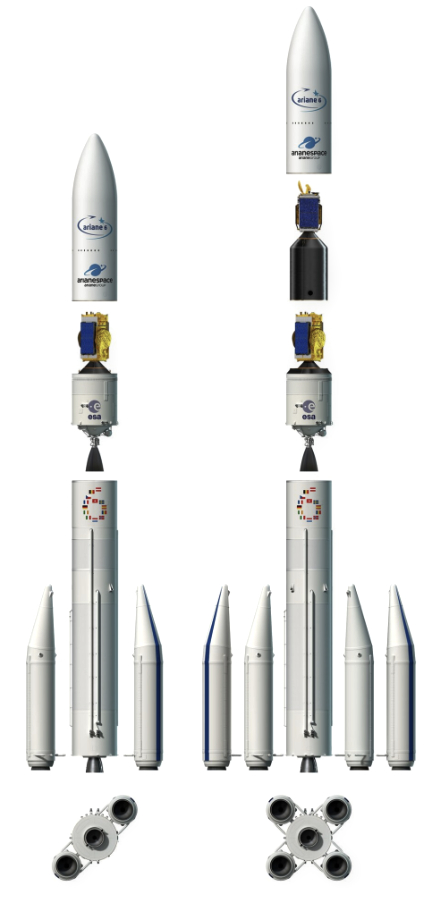
The systems that are part of the main launch complex structures are being qualified. For example, the deluge system that will protect Ariane 6 and ground installations from the acoustic energy created at liftoff has been tested. The disconnection of the fluidic systems for Ariane 6 on the launch pad, tested in France, are now being tested on the launch pad. A central core mockup was used to test ground equipment and practise the manoeuvres involved in a launch campaign. France’s space agency (CNES) and ArianeGroup teams jointly performed these tests under the responsibility of ESA.
Further combined tests between launcher and launch base are under way. Ariane 6 launch complex processing Ariane 6 launch complex processing
“The Ariane 6 launch complex is a remarkable achievement and an icon of European cooperation and advancement. It represents a vital part of a program of intense activity at Europe’s Spaceport to prepare for the first flight of ESA’s next generation launch vehicle,” said Daniel Neuenschwander, ESA Director of Space Transportation.
